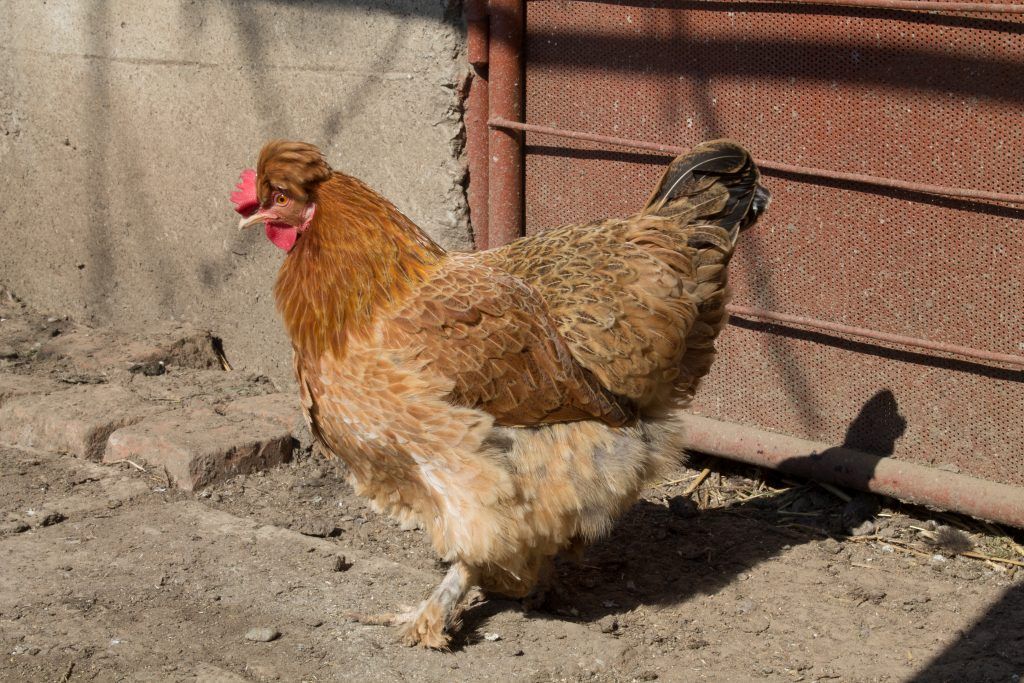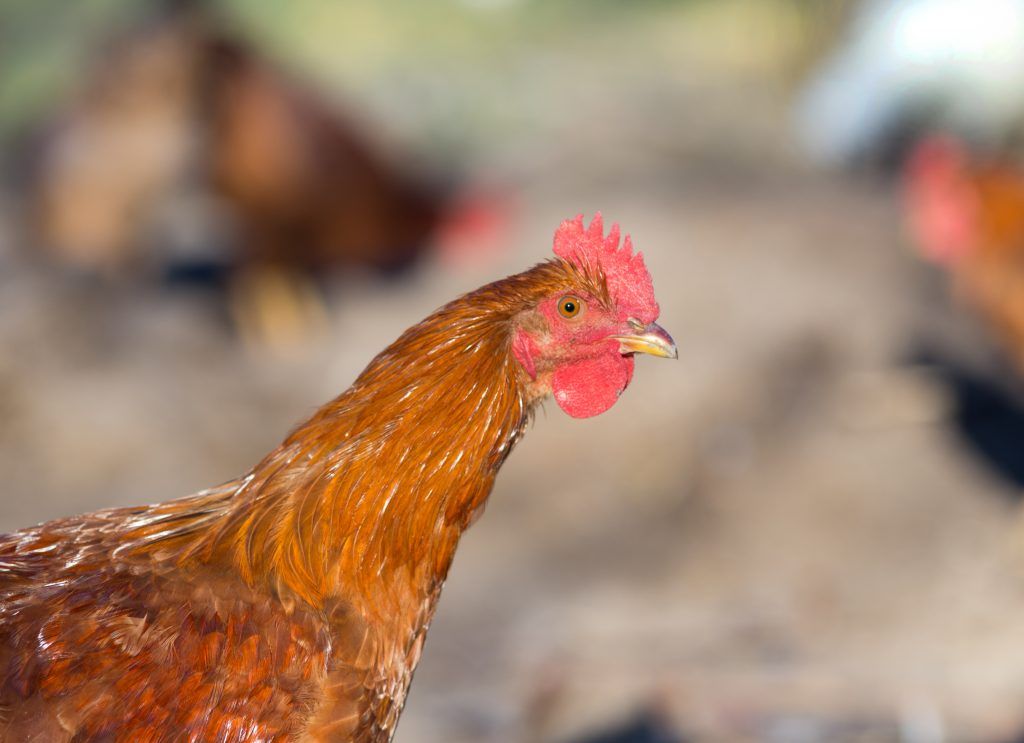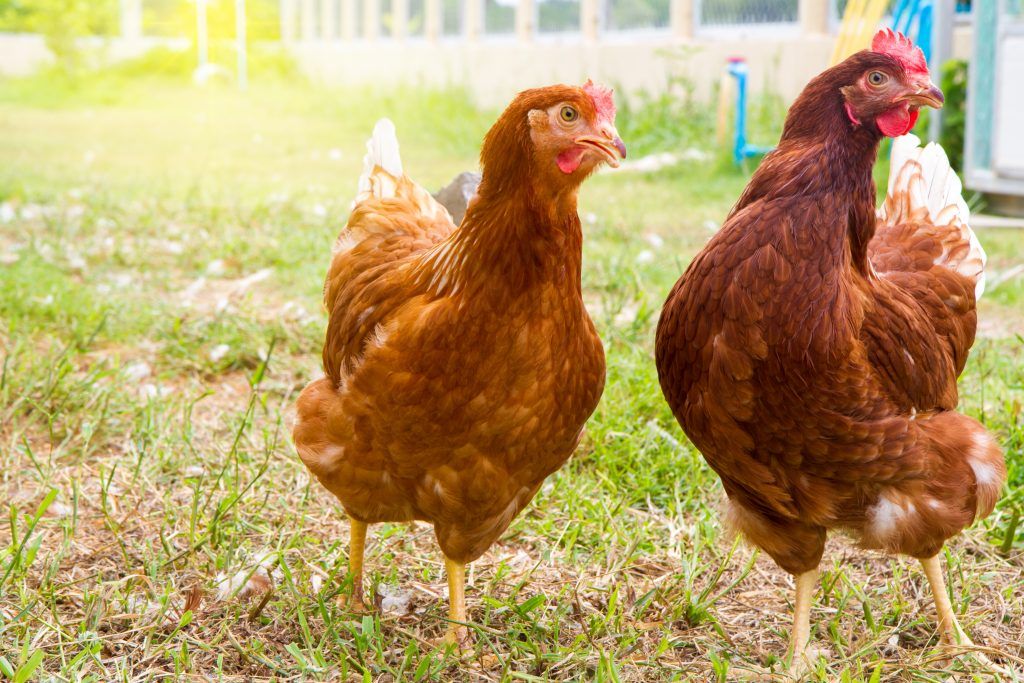Description of chickens of the New Hampshire breed
Poultry farming is the least costly agricultural activity. However, in order to get a good profit from the farm, attention should be paid not only to the conditions of keeping and the diet, but also to the breed of poultry. First you need to decide on the purpose of keeping chickens, because there are meat and egg-laying species. If there is no clear direction, then the New Hampshire breed of chickens is best suited.

Characteristics of New Hampshire chickens
Photos of these birds tops the rating of chickens, equally good in all respects. This type of chicken was bred by the selection method, therefore it has good egg production and is easily fattened for slaughter.
Breeding history of the species and habitat of the bird
New Hampshire chickens, also known as New Hampshire Reds, are relatively recent. Breeding began in New Hampshire and southern Massachusetts around 1910. The ancestor of this breed is Rhode Island red.
Since the first representatives of this breed, breeders have sought to achieve an increase in the vital activity of the bird, early maturation, the rapid development of the shape, size and structure of the egg, as well as the maturation of the feather cover. It is believed that no other varieties were crossed with Rhode Island red specifically to breed New Hampshire. The breeders acted exclusively in a selective way. Such birds were developed for 20 years, until in 1935 it was not standardized by the American Poultry Association.
Appearance of the breed
Very often it is the photo of the New Hampshire chickens and the description that awakens the desire to purchase birds of this variety for your farm. Plumage and body structure have long put these birds on the pedestal of reference hens.

Description of the appearance of the New Hampshire breed
The neck of New Hampshire is usually golden with black dots. The comb is neat, five-toothed, erect. The tail is curved in relation to the body at an angle of 45 °, the tail feathers of males are quite long. The legs are of medium length, widely spaced and yellow in color. The beak is small, dark in color. Black feathers can be seen in the tail. The volume of the breast is wide and its shape is convex.
Outwardly, this species has a nut color. The beautiful, bright, rich plumage of New Hampshire remains lighter than that of their Rhode Island ancestors and is described as "deep red-chestnut". But this color has never been a standard in the process of formation of the breed. Only the best representatives of the breed are left for breeding, and chickens with flaws are sent for slaughter.
The most common breed defects are:
- the shape of the body does not fit the standards of the species;
- the scallop is too large or too small;
- white bloom on the lobe;
- plumage color is different from the norm;
- a different shade of eyes;
- black dots on the wings;
- bird fluff of gray-black shade;
- whitish skin and yellow beak.
Due to their external beauty, males very often pose for a photo or become symbols of various events.
Performance characteristics
This breed is traditionally bred for a dual purpose: it is raised for both meat and eggs. But the emphasis is still on the weight of the chicken. Chicken farmers are now trying to find a balance between muscle mass and egg production.
Chickens grow and gain weight quickly, so they can be used as broilers or roasters. Live bird weight varies. According to the standard, the chicken should weigh approximately 3-3.5 kg, and the cockerel 3.5-4.5 kg.
The number of eggs on an annual basis is 210 pieces per chicken. In this case, the egg can reach a weight of 72 g. But on average, usually 65-70 g. It should be borne in mind that with an increase in the mass of an egg egg production falls. Chickens of this breed are distinguished by an increased incubation instinct. They lay brown eggs and handle them very carefully and gently, do not bite or break.
Chickens and young New Hampshire
The first chicks hatch in the spring, in March. Usually, out of a hundred chickens, about 40 heads of the best hens and cockerels are selected, which are left to the tribe to get a new brood next year. It is believed that the most productive age of roosters is the first year of life. They are sometimes kept for up to 3 years, but not more. The mane of the male should be bright golden and shiny, the tail black, and under the wings - feathers to match the tail. Particularly pugnacious roosters are discarded, since calmness in this case is a sign of the breed.
Roosters in New Hampshire are very loving and often persistently look after the hen they like, so females need a whole system of mesh fences and separate nooks, where they could rest from the males, or at least not be attacked by all the roosters at the same time.

New Hampshire Rooster and Hen
When the chickens grow up in the fall, they begin to sing, and culling is also done by voice. Only the bassiest are left for divorce.
This species is distinguished by increased survivability, due to its selective origin: about 90% of the total population of chickens survives.
Character
Usually females of this breed are extremely calm. They love to walk, so you should not restrict the birds in movement. However, it is best to fence off the site. aviary, because chickens are extremely inquisitive and can turn the beds.
This species does not show aggression towards congeners or other breeds. While incubating eggs from females, take a substitute for each other.
The only whim of this breed can be considered unwillingness to rush in a clearly defined place. Females love to build their own nests on their own in those secluded corners where they see fit.
Males of this bird species are distinguished by noble character traits. They seek the attention of the female by courtship and always defend their territory even from a stronger enemy.
Conditions of detention
This species perfectly tolerates any environment: both closed and free. They understand their masters well and easily get used to them.
Sometimes the hen avoids the rooster and stops rushing. This means that she needs to rest for about a week. If this behavior lasts longer, then you should find out if the bird is sick.
When laying eggs, the hen may not be able to handle this process on its own. This happens with injuries or inflammation of the oviduct... In this case, you should open the opening of the oviduct in the cloaca with clean hands, greased with calcined oil, and then give the bird biomycin.
A chicken coop in mid-latitude conditions should be relatively warm. The bird should not be kept on the concrete floor, otherwise it will catch a cold and die.
The chicken room must have sufficient ventilation and insulated ceiling. It is very convenient for chickens if a covered fenced shed is attached to the hen house, where the bird can walk in inclement weather. Walking at any time of the year promotes the health of New Hampshire.
This breed copes well with the cold, however bird scallops can suffer from frostbite.
Feeding rules
This type of chicken is unpretentious in food. Chickens should be fed a boiled egg in the early days. After a couple of weeks, greens and mixed feed are added to the diet of young animals, and at 2 months of age, corn can be offered to the birds.
Although New Hampshire has good immunity, they need to be vaccinated against the plague. In winter complementary foods, the following foods should be introduced:
- green onions;
- sprouted oats;
- beet and carrot tops;
- cottage cheese and boiled eggs;
- complexes of vitamins and minerals.
Also, in the daily diet of chickens, be sure to add bone meal... You can make this supplement yourself: just burn the beef or pork bones in the oven. In this breed, egg production increases in winter, therefore, it is required to increase the addition of calcium and phosphorus to the diet.
Summarizing
So, New Hampshire is the type of poultry that is suitable for both experienced farmers and beginners. In addition to good meat and high egg production, these chickens are distinguished by beautiful plumage and pleasant appearance. They are grown for exhibitions and photos.
The conditions of detention of the New Hampshire are not particularly difficult. Thanks to its selective origin, the chicken adapts perfectly to various feeds and temperatures. The soft nature of this species also serves as a plus, because New Hampshire can be lodged with other types of chickens.


